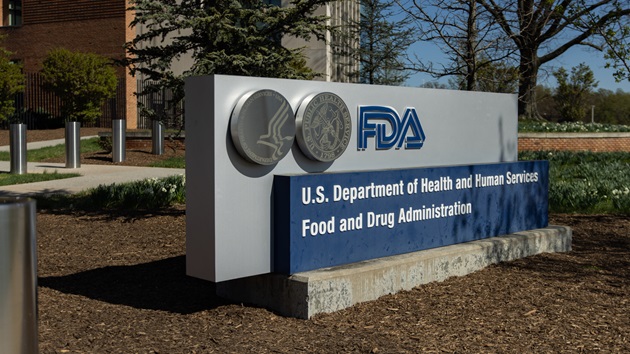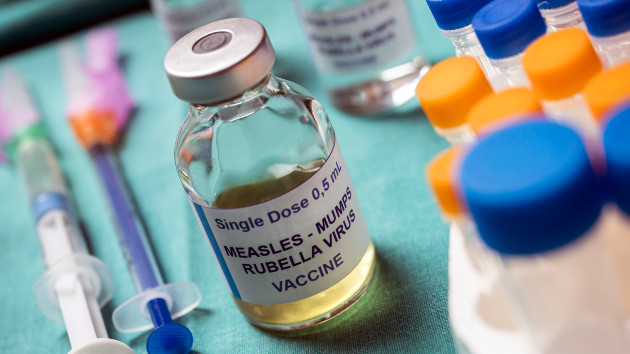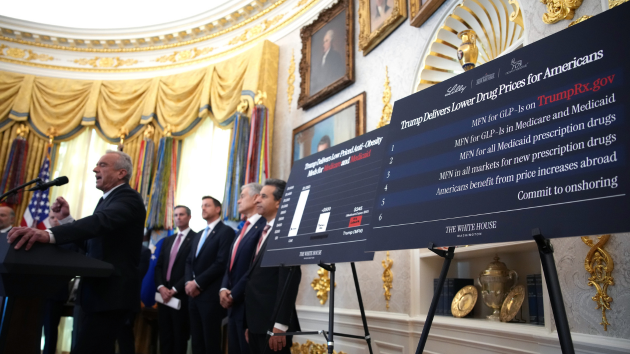The winter COVID wave that wasn’t: Why the US didn’t see a surge
Written by ABC Audio ALL RIGHTS RESERVED on March 13, 2023

(NEW YORK) — When the United States saw COVID-19 cases and deaths rise around this past Christmas and New Year’s, many Americans feared the country was in for a third winter wave.
But as quickly as both metrics went up, they also came down. Weekly cases and deaths in late winter 2022-23 are on par with what was seen in spring 2022, according to data from the Centers for Disease Control and Prevention.
Last year, the Biden administration issued a bleak warning that as many as 100 million Americans could be infected during a COVID-19 wave in the fall and winter.
However, as the third anniversary of the World Health Organization declaring the virus to be a global pandemic passes, it appears that the U.S. has survived its first winter without a massive COVID-19 surge.
Experts told ABC News that a combination of more immunity, better treatments, less severe infections and more people following mitigation measures likely played a role.
“We did not see a wave because we had a very high immunity due to infections and vaccinations,” Dr. Ali Mokdad, an epidemiologist with the University of Washington’s Institute for Health Metrics and Evaluation in Seattle, told ABC News. “Omicron and its subvariants did not spare anyone. Also, many of the infections were minor and not reported or did not end in a hospitalization.”
Comparison between winters
During the first winter wave, weekly cases peaked at 1,714,256 the week of Jan. 13, 2021, as did weekly deaths at 23,378, according to CDC data.
Subsequently, during the second winter wave — due to the omicron variant — weekly infections reached their high point of 5,630,736 the week of Jan. 19, 2022, and weekly deaths saw a high of 17,373 the week of Feb. 2, 2022, the data shows.
By comparison, according to the CDC, the highest number of weekly cases seen during the most recent winter wave was 472,601 the week of Dec. 7, 2023 — the first time the peak has not surpassed 1 million.
Meanwhile, weekly deaths peaked at 4,448 the week of Jan. 11, 2023 — five times lower than the peak during the first winter wave and nearly four times lower than the peak during the second wave.
Dr. John Brownstein, an epidemiologist and chief innovation officer at Boston Children’s Hospital and an ABC News contributor, said there is some inconsistency when comparing past winter surges to this winter because there was a lack of overall testing and a declined use of home tests this winter.
However, the lower number of hospitalizations and deaths is likely a good indication of a less severe season this year compared to previous years, he said.
“Even though infections this winter were high in the community, the hospitalizations were relatively stable compared to the past few years,” Dr. Peter Chin-Hong, an infectious diseases specialist at the University of California, San Francisco, told ABC News. “Many of us suspected that it wouldn’t last very long.”
More immunity
Experts told ABC News that as winters have gone by, more immunity has built up in the population.
During the first winter wave, COVID-19 vaccines were not widely available. They only began being rolled out in mid-December and only for specific groups, including health care workers and adults aged 65 and older.
By the time the second winter wave rolled around, most of the U.S. population had gotten a primary series, according to CDC data, and the first booster was available to the general population.
During this most recent winter, an updated bivalent booster is also available, which — although only 16.2% of the population has received it — has likely offered at least some protection.
“I think the reduction in serious diseases is increased population immunity,” Chin-Hong said. “Just the percentage of people who have been exposed and then you layer on that vaccinations.”
Last year, the CDC estimated that, as of May 2022, more than 94% of the U.S. population has COVID-19-induced antibodies either from past infection or vaccination.
Evolution of treatments
The experts said another reason this season may not have been as severe for COVID is that we have more effective treatments.
During the first winter wave, remdesivir was the only drug approved to treat patients with severe COVID cases.
However, clinical trial data was later released showing the drug did not significantly reduce the risk of mortality in severely ill patients but was more beneficial when given early in treatment.
Since then, we’ve seen the introduction of antiviral pills, including molnupiravir from Merck and Ridgeback Biotherapeutics and Paxlovid from Pfizer.
Clinical trial data has shown Merck’s pill reduces the risk of hospitalization and death for patients who have symptoms and are at risk of severe illness by 30%, while Pfizer’s pill reduces the risk by nearly 90%.
People following mitigation measures
“I think the population’s consciousness around infectious disease is completely changed,” Brownstein told ABC News. “That wouldn’t necessarily mean for everyone but, for a large segment of the population, there’s a hyper-awareness around infectious disease that has led to significant behavior changes.”
This means that even as mask mandates and other mitigation measures have been removed, everyday Americans are being more thoughtful about staying home when sick, about wearing a mask in public situations or testing before attending a gathering, the experts say.
Chin-Hong said this is different from what he’s seen during winters before the pandemic.
“In the old days before the pandemic, people were just milling around,” he said. “And because there’s a lot of awareness that [at-home] tests may be negative early on for COVID, people just stayed home and did all the measures and isolated.”
He added that this likely also helped protect people from other diseases that were circulating this past winter including influenza and RSV.
Importance of staying vigilant
The experts told ABC News it’s important to remain vigilant because a new, more transmissible variant or a new outbreak could easily lead to another wave in the U.S.
“I think, in general, having a bunch of infections one year before helps with the next year, because you do carry across some immunity,” Chin-Hong said. “With COVID, who knows? It all depends on when people are losing immunity and what the rules are on boosting, which might happen in the fall.”
Earlier this year, it was revealed the U.S. Food and Drug Administration is considering a new COVID-19 vaccine strategy that would see Americans getting a single annual shot, similar to the flu vaccine.
According to briefing documents, the new approach would simplify public health messaging on when to get COVID vaccines, with the hope that making the guidance easier for people to understand could potentially increase vaccination rates in the U.S.
“I think that ultimately the trend will likely be towards less and less severe surges,” Brownstein said. “I don’t think it’s definitively predicted that we’ll always see smaller surges. There’ll be some variation that results from the factors of what variants circulating, what level of immunization is in the population, behavior.”
He continued, “So we can’t fully predict, but the overall trend over the coming year should be towards milder and milder surges.”
Copyright © 2023, ABC Audio. All rights reserved.
 KVSP
KVSP 




